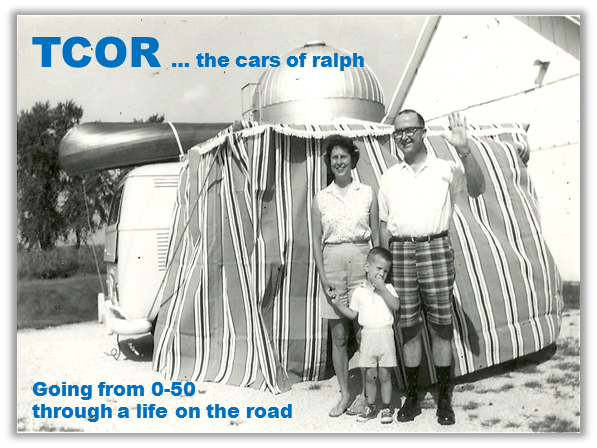Rubber bumpers ruined the MGB
From 1962 through the 1970s the MGB Roadster was the quintessential British sports car. Relatively inexpensive, it provided fun, sun, and a great look and sound, if perhaps somewhat dodgy reliability. But in 1974 US safety regulations forced a bumper change from classic - and somewhat useless - chrome to rubber bumpers fore and aft. Did rubber bumpers make the cars any safer? Can anything that small and low actually be safe? Perhaps not.
"They've ruined it!" screamed enthusiasts, as thousands of tweed wearing, stringback glove owning drivers surveyed the horror that the Americans had wrought. Funny though, as I look at the post '74 British Leyland cars, including the Spitfire and MGB, they don't seem nearly as awful anymore. Perhaps it is just the rarity of even seeing a nice MGB or Spitfire on the road today that takes the sting away.
An unscientific perusal of MGB auction results on Bring a Trailer shows chrome bumper cars selling at higher prices, as would be expected. But I wouldn't pass up the opportunity to spend a day behind the wheel of a later Roadster, and I wouldn't hide behind big dark glasses doing it.
Malaise era C3 Corvettes are awful
With barely 180 horsepower on tap in some models, and manual transmissions rare, the later C3 Vettes ('76-'83) seemed a pale imitation of their previous fire breathing predecessors.
But was it really that bad? With a sub 8 second 0-60 times they were still about the fastest car you could buy in America. Only a few exotics were faster - along with the new Porsche 928. But compare costs and the Vette, as is so often the case, seems like a good balance of value and performance. And let's be sure to point the finger at the real culprits in the Vette's seemingly sad state - the Feds and the Oil Crisis. It took auto manufacturers years to figure out how return to real performance with all of the new restrictions. Fuel injection anyone?
This car truth seems to be changing too. Later model C3 Corvette values are on the rise, with Indianapolis Pace Car versions crossing the $30k mark. Of course that's not big block money, but it's respectable. And like the rubber bumper MGB, the stigma of those underpowered Vettes is fading. Now they are simply a wonderfully shaped sports car - as they always were.
The 924/944/968/928 aren't 'real' Porsches
Now I'm happy to report that's all ancient history. 928 values, particularly for later S4 and GT/GTS versions have been strong for a while. And when an '88 944 Special Edition hit nearly $25k at Amelia Island in 2017 the word was out. Clean, low mile 944 Turbos (951) regularly trade in the low to mid- $30s. And 968s, one of the rarest Porsche models, are highly sought after. Even pre-1985.5 944s are moving upward.
I could go on and on... V12 XKEs and the Porsche 996 for example. Sadly however, some automotive truths may linger... Mustang II I'm looking at you.
Clearly car truths are not written in stone, or carbon fiber. So just what does drive shifting opinions? Time and growing rarity would seem to be the most obvious. Enthusiasts are also a big part of changing perceptions. Radwood has certainly put a spotlight on the often overlooked cars of the 1980s and 90s. Who could have imagined AMC Gremlins and GM X-cars drawing a crowd?
But perhaps the reasons go deeper than simply nostalgia. Despite some fabulous new performance models, sports car design has stagnated, or is so influenced by aerodynamics and pedestrian height requirements as to be almost laughable (hello Supra). MGBs, C3 Vettes, and front-engined Porsches are all paragons of good design, even when encumbered with bad bumpers. They were also darned good performance cars for their day. As time has passed those attributes take a front seat to more mundane things like tail light shapes. Any thoughtful enthusiast would grab the keys to a '74 tii, a '79 MGB, or a '78 Indy Pace Car in a second. In the end, that's the real truth.




